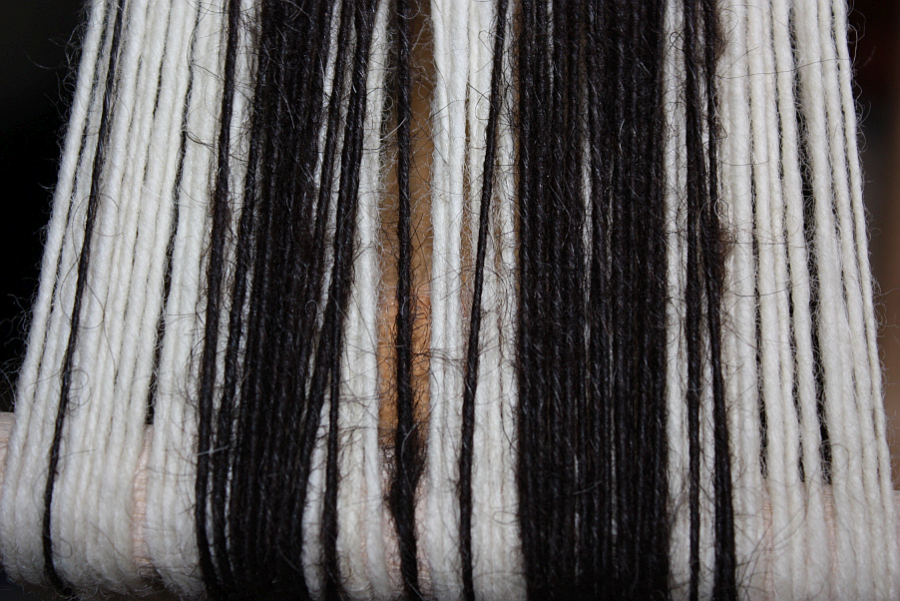Search the Blog
Latest Comments
Miriam Griffiths
Very Old Spindle Whorls?
22 November 2024
Agree with you that it comes under the category of "quite hypothetical". If the finds were from a cu...
Miriam Griffiths
A Little Help...
22 November 2024
Hypothetically, a great thing - and indeed I thought so when I first heard of it several years ago. ...
Bounty Hunter Seeds
Tomato Seeds.
02 November 2024
Thank you for taking the time to share such valuable insights! This post is packed with helpful info...
Miriam Griffiths
Blog Pause...
01 November 2024
Hope you have a most wonderful time! One day, I really should get organised and join you.
Katrin
Cardboard Churches!
18 October 2024
I didn't know there's foldable models - I will have a look into that, thank you!
Spinning!
There was some spinning today... in both black, and white. The reason for this is the exciting new and large project - recreating the finds (including the garments) that were found with the bog body of the Man from Bernuthsfeld (Wikipedia has an article about him, but only in German).
The body and the finds were off for research since 2011, but have returned last summer to the Landesmuseum Emden. The wish to show a better picture of the man, and how he might have looked in his lifetime, has led to this reconstruction project of the finds... which is totally awesome, and means a lot of (partly quite fiddly) work.
First step, after the extensive planning, is getting the fabrics. And, you might have guessed it - they are not your common garden-variety pieces, available without a problem in the next fabric shop. The tunic is put together from patches - more than 40! - and these patches are mostly from already worn fabrics, more than 20 different kinds.
Weaving small bits of fabric (a patch here, a patch there, patches, patches everywhere) is much less efficient than weaving a proper, large piece - which means that a lot of the planning was figuring out how large the individual pieces have to be, and how they can be woven without driving everybody involved utterly crazy.
The yarns are partly also a problem - which is the reason that I did a tiny bit of spinning. The rest of the yarns will be machine-spun, but as close to the original yarns as possible, and the weaving has already started. So exciting!
[caption id="attachment_3143" align="alignnone" width="442"] The yarn, dark and light - it is for a checkered patch that sits prominently on the breast of the tunic...
The yarn, dark and light - it is for a checkered patch that sits prominently on the breast of the tunic...
The body and the finds were off for research since 2011, but have returned last summer to the Landesmuseum Emden. The wish to show a better picture of the man, and how he might have looked in his lifetime, has led to this reconstruction project of the finds... which is totally awesome, and means a lot of (partly quite fiddly) work.
First step, after the extensive planning, is getting the fabrics. And, you might have guessed it - they are not your common garden-variety pieces, available without a problem in the next fabric shop. The tunic is put together from patches - more than 40! - and these patches are mostly from already worn fabrics, more than 20 different kinds.
Weaving small bits of fabric (a patch here, a patch there, patches, patches everywhere) is much less efficient than weaving a proper, large piece - which means that a lot of the planning was figuring out how large the individual pieces have to be, and how they can be woven without driving everybody involved utterly crazy.
The yarns are partly also a problem - which is the reason that I did a tiny bit of spinning. The rest of the yarns will be machine-spun, but as close to the original yarns as possible, and the weaving has already started. So exciting!
[caption id="attachment_3143" align="alignnone" width="442"]
 The yarn, dark and light - it is for a checkered patch that sits prominently on the breast of the tunic...
The yarn, dark and light - it is for a checkered patch that sits prominently on the breast of the tunic...Comments 5
Cathy Wycliff
on Thursday, 08 June 2017 02:09
Katrin
on Thursday, 08 June 2017 08:17
The original garment was put together from patches taken from already used fabrics, not from small woven patches - but for our reproduction, we have to use (and age) new fabrics, since we don't get used and worn early medieval type cloth fragments today.
As to "must have been tedious" - yes, that is probably true. We shall find out for ourselves once we get to that stage!
Cathy Wycliff
on Thursday, 08 June 2017 22:14



